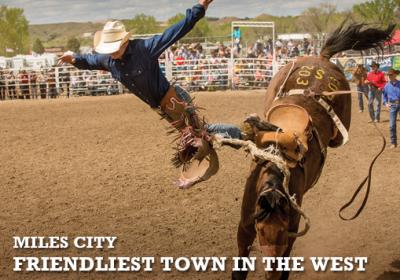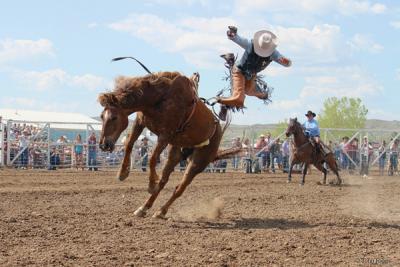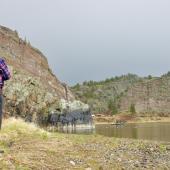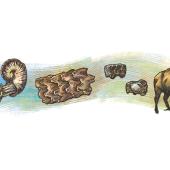Miles City: Friendliest Town in the West
“Time was, when to write yourself down, in ‘the states,’ as from Miles City, Montana, was to endow you with a reputation for ‘toughness’ and to induce the more curious stranger to interrogate you on the presumed conditions of lawlessness that were believed to prevail here.”
Today, Miles City (or MC as the locals call it) has overcome this perception and likes to bill itself at the “friendliest town in the West.” The name Miles City comes from Colonel Nelson A. Miles, who was sent out West from Nebraska to establish the US Army post Fort Keogh in August, 1876. With the arrival of the Army came the need for goods and services, and thus was the beginnings of MC, as entrepreneurs ventured West to establish the businesses that would service the army.

MC is a welcome break from the long stretch of I-94 that runs across southeastern Montana. It’s an ideal jumping off spot for a quick bite, filling the tank, stretching the legs or perhaps spending the night in one of the chain hotels. But to understand the heart of the city and why it’s sometimes referred to as the “cow capital of the world,” give yourself the gift of time to explore Miles City. This is best done by heading over to Main Street and checking out what makes the city tick.
You’ve got to respect people that step in when a building is scheduled for demolition and work hard to save it. Such is the case with the Montana Bar on MC’s Main Street that was closed for nearly four years in the late 1980s, but was rescued and brought back to life by a group of stockholders. Operating as a watering hole since 1908, the bar is a must see on the list of Miles City attractions. The back bar, liquor cabinet, horsehide covered booths and walk-in icebox arrived by way of steamboat from St. Louis Missouri in 1912. The red longhorn steer mount hanging above the booths was the lead steer from an early 1900 cattle drive from Texas to Montana. Whether it’s a sarsaparilla or local brew, belly up to the bar to soak up some nostalgia.
Situated where the Tongue River and the Yellowstone River (pictured here at sunrise) come together, Miles City is surrounded with vast expanses of prairie grasslands, punctuated with badlands, making this part of Montana ideally suited for cattle ranching. The local look here is very casual — plenty of cowboys in older pickups with a dog riding shotgun, and then the rancher driving a king cab with his faithful dog at his side. The plaid work shirt, and either the well-worn cowboy hat or baseball cap pretty well sums it all up.
What to do when you find yourself jobless? For Ken Hess, it meant picking up on a dream he had of making hats. So he found a hatter to teach him the ropes, and 17 years later, he is still at it from his store on MC’s Main Street, Kickin’ Ass Hat Company. Ken will say he chose this unique name as he wanted something people would remember. He is proud to say he has sold hats to folks in 48 states and 10 foreign countries (last year was the first for sending one to Africa).

The chocolate-colored log building that is the centerpiece of the Range Riders Museum holds a captivating history of eastern Montana within its walls. Founded in 1939 by a group of seasoned cowboys, it’s here you’ll come to appreciate the life and times in the days of Fort Keogh. Pioneer Home provides a glimpse into the “good old days” of life on the frontier, while Lame Deer Camp details the life and times of Indians who called this land home. The Bert Clark gun collection is an exceptional exhibit of over 400 firearms. The Range Riders Museum should be top of the bucket list for American history buffs.
Originally the concrete basins of the 1910 WaterWorks that held Miles City’s drinking water for over sixty years, the WaterWorks Art Museum now houses a permanent collection of images from renowned photographer L.A. Huffman, who documented frontier life as the “post photographer” of Fort Keogh. In addition, this repurposed space, listed on the National Register of Historic Places, has become a showcase for rotating contemporary exhibits, as well as providing educational outreach through both adult and children’s classes. Its lovely setting along the Yellowstone River makes for an ideal spot to pack a picnic to cap off the museum visit.
If you’re looking to get gussied up as a cowboy or cowgirl, head to The Miles City Saddlery, where the selection of Western clothing and boots is almost overwhelming. The business started in 1909, when the need for saddles was on the rise. In 1916 alone, 1,937 saddles were made, but the demand for saddles would take a dive with the Depression years. The business would pass through a few hands before it would end up with present owners Jack and Mary Lou Deibel, who purchased the business in 1989 and started the revival of the saddle making. In addition to the retail, there is a beautiful display of over 100 hand-crafted saddles in the upstairs gallery.
BUCKING HORSE SALE (“A Bucking Good Time”)
Ask any Montanan what they know about MC, and the answer surely will be “The Miles City Bucking Horse Sale.” This annual May event started back in 1951 with the sale of 350 “bucking horses” that drew a large crowd. The organizers paid “mount money” — $5 for bare backs and $10 for saddle broncs. By the second year, with a crowd of 2,500, 10 buyers and 90 riders, 350 horses went on the auction block. Sixty-five years later, the beloved Bucking Horse Sale has become Montana’s version of Mardi Gras. While the need for rodeo stock has diminished (due to strides in genetic breeding), the four-day event has grown to attract an enormous and often boisterous crowd. In addition to the auction of both horses and now bulls, the extravaganza includes a wild horse race, parade, quick draw art auction, pari-mutual horse racing, street dancing, and trade exposition.












- Reply
Permalink